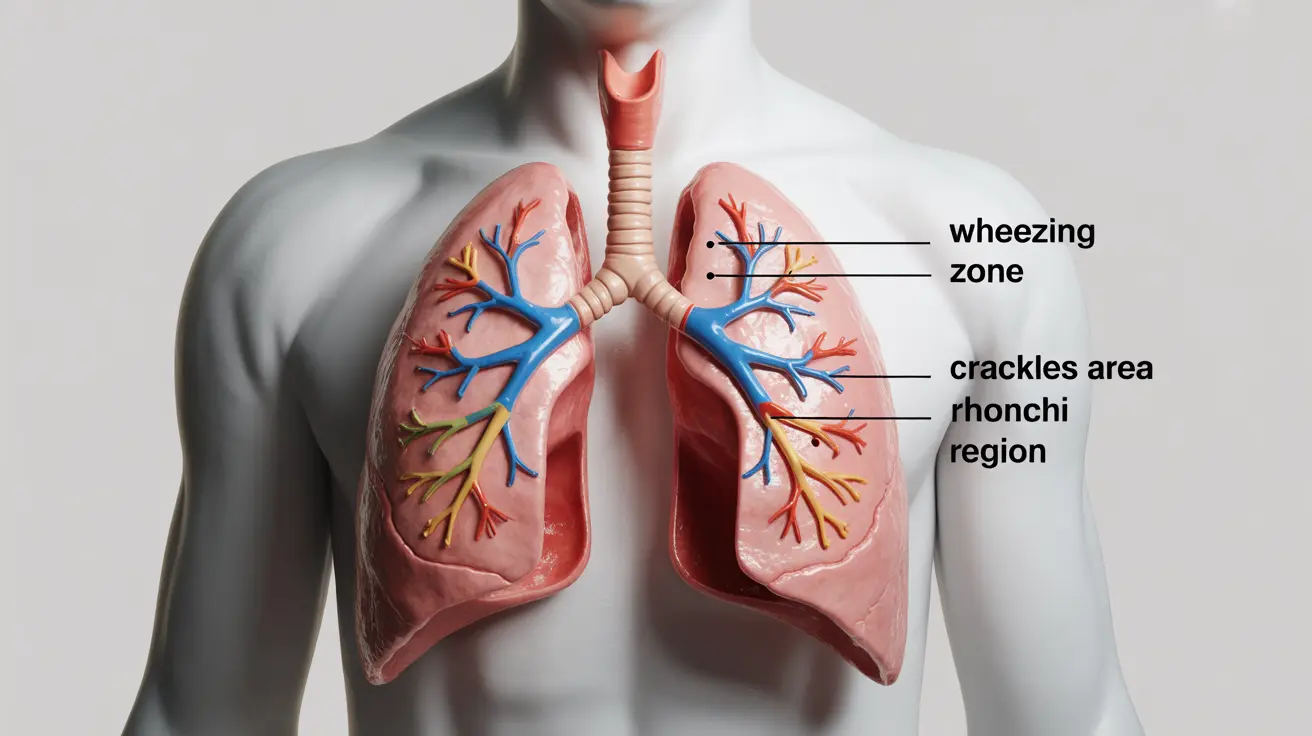For individuals living with Chronic Obstructive Pulmonary Disease (COPD), understanding the various lung sounds associated with their condition can be crucial for managing their health. These respiratory sounds can provide valuable information about disease progression and help identify potential complications early.
Healthcare providers regularly monitor these breathing sounds as part of COPD assessment and treatment planning. Learning to recognize and understand these sounds can empower patients to better communicate with their healthcare team and take proactive steps in their care.
Common Types of COPD Lung Sounds
Different lung sounds can indicate various aspects of COPD and its progression. Understanding these sounds helps both medical professionals and patients monitor the condition more effectively.
Wheezing Sounds
Wheezing produces a high-pitched whistling sound during breathing. This occurs when airways narrow or become inflamed, forcing air through smaller spaces. In COPD patients, wheezing is often more noticeable during exhalation and may indicate bronchial constriction or inflammation.
Crackles and Rales
These sounds resemble the noise of crackling cellophane or popping bubbles. Crackles typically occur when air moves through fluid-filled airways or when previously collapsed air sacs suddenly open. They're often heard during inspiration and can indicate the presence of fluid or mucus in the lungs.
Rhonchi Sounds
Rhonchi are low-pitched, rumbling sounds that suggest the presence of secretions or narrowing in the larger airways. These sounds often change or disappear temporarily after coughing, as this can help clear the airways.
Clinical Significance of Lung Sounds
Lung sounds serve as valuable diagnostic tools for healthcare providers. Changes in these sounds can indicate:
- Disease progression
- Presence of infections
- COPD exacerbations
- Treatment effectiveness
- Need for medication adjustments
Regular monitoring of lung sounds helps healthcare providers track changes in COPD status and adjust treatment plans accordingly.
When to Seek Medical Attention
Certain changes in lung sounds warrant immediate medical attention, including:
- New or worsening wheezing
- Increased frequency of crackling sounds
- Appearance of unusual breathing sounds
- Sounds accompanied by increased breathlessness
- Changes in sound patterns during regular activities
Frequently Asked Questions
What do wheezing, crackles, and rhonchi lung sounds mean in COPD? Wheezing indicates narrowed airways, crackles suggest fluid in small airways or air sac inflammation, and rhonchi indicate secretions in larger airways. Each sound provides specific information about airway conditions in COPD.
How can lung sounds help doctors diagnose and monitor COPD progression? Doctors use lung sounds to assess airway obstruction, inflammation, and fluid accumulation. Regular monitoring helps track disease progression and treatment effectiveness, allowing for timely adjustments in care plans.
Why do people with COPD hear wheezing or crackling sounds when breathing? These sounds occur due to air moving through narrowed, inflamed, or fluid-filled airways. In COPD, structural changes and inflammation in the airways create conditions that produce these characteristic sounds.
Can changes in lung sounds signal a COPD flare-up or infection? Yes, new or worsening lung sounds often indicate COPD exacerbations or respiratory infections. Changes in sound patterns can be early warning signs that require medical attention.
How is lung sound monitoring used to guide COPD treatment and management? Healthcare providers use lung sound assessments to evaluate treatment effectiveness, adjust medications, and determine when additional interventions are needed. Regular monitoring helps optimize COPD management strategies.
Understanding and monitoring COPD lung sounds plays a vital role in managing this chronic condition effectively. Regular communication with healthcare providers about changes in breathing sounds can lead to better outcomes and improved quality of life for individuals with COPD.




